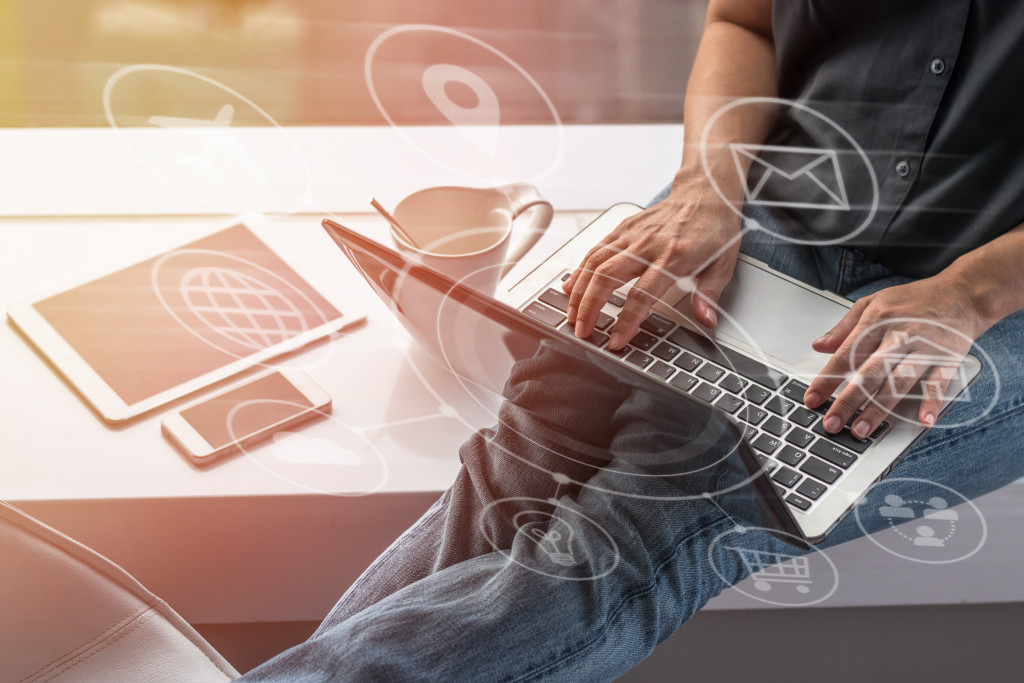Not only do brick-and-mortar stores have to compete with other establishments of the same type, but they also have to keep up with online businesses. Needless to say, this is easier said than done. But luckily, digital technology is helping retail stores keep up with the competition by revolutionizing the customer experience, enhancing business processes, and appealing to more audiences.
Here are some of the best examples of digital technology improving the retail store experience:
1. Augmented reality
Just like PDA and PDA repair services, augmented reality is improving both customer and retailer experience.
Augmented reality is a type of tech that allows customers to “try on” clothes and accessories without actually touching it. It eliminates the hassle of physically putting and taking off clothes in the dressing room, as well as helps retailers to keep their store organized. Moreover, augmented reality minimizes customers’ physical contact with the store goods but still allows them to see what a product would look like on their person, which is extremely useful during the current pandemic.
2. Self-checkout
Self-checkout kiosks allow customers to check out their items themselves, which, in turn, helps retailers save on labor costs. While this type of technology raises concerns about theft, retailers have found a way to address the issue by making use of security tags as well. As a result, stores with this type of tech avoid long queues as much as possible, thereby improving the customer experience.
3. Contactless payment
Contactless payment tech comes in several forms. There are systems that allow users to scan a QR code with their smartphone to pay, while there are apps that let retailers scan a bar code on customers’ devices. Whatever the system might be, this type of technology makes the checkout process faster than ever as opposed to using cash or credit cards.
Moreover, digital receipts can be sent directly to the customer with this type of checkout system, thus minimizing paper expenses as well as the risk of customers losing their receipts.
4. Inventory robots
An inventory robot utilizes cameras, machine learning, and computer vision to monitor inventory for misplaced items and low stocks. With these functions, retail stores don’t need to have employees going up and down the aisles to monitor the shelves manually, which helps maximize efficiency as well as reduce labor costs.
5. Virtual reality

Virtual reality is not a new type of tech, but its applications are continuously being developed across many types of industries. In the retail industry, virtual reality serves many purposes. For example, it can help business owners “see” what their store would look like with a redesign plan before actually starting the project.
On the other hand, virtual reality can also be an excellent tool to aid in customer choice. Another great example of VR application is in car showrooms, wherein virtual reality can allow customers to configure and explore their dream car in realistic detail.
6. Cloud computing
Cloud computing helps streamline business processes by speeding up data processing. These processes can include inventory tracking, stock checking, order processing, and shipping. Aside from that, cloud computing also helps reduce the cost of software development by eliminating the need for multiple software platforms.
7. Autonomous shopping carts
Seen in high-tech supermarkets, autonomous shopping carts follow customers around the store as they shop. Without the need to push a cart along, customers can focus on more important tasks at hand, such as checking their shopping list or inspecting products on the shelves.
8. Facial recognition
There are cameras today that have facial recognition capability, which is a huge jump from plain old security cameras. When applied in a retail setting, facial recognition cameras can track customer paths within the store, identify customer demographics, and help prevent theft.
Furthermore, this type of tech helps retailers determine which parts of the store customers gravitate to, hence allowing them to create a more efficient layout for their customers.
9. Beacons
When customers have their Bluetooth turned on in the store, beacons can detect the devices and interact with them if customers have the store app installed. Using this technology, retailers can send targeted messages containing personalized offers, promotions, and the like while they are shopping.
Technology is continuing to change the customer experience for the better. If your retail store needs to apply more tech to your business processes and customer interactions, these are the best–and most effective–tech solutions that you can start with.

